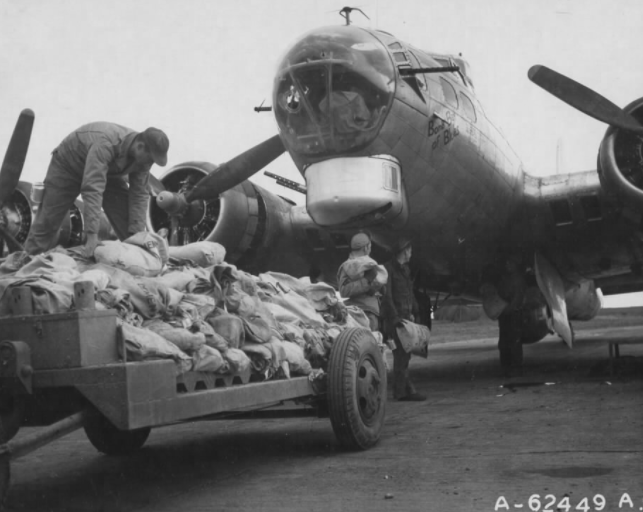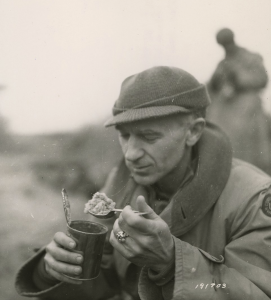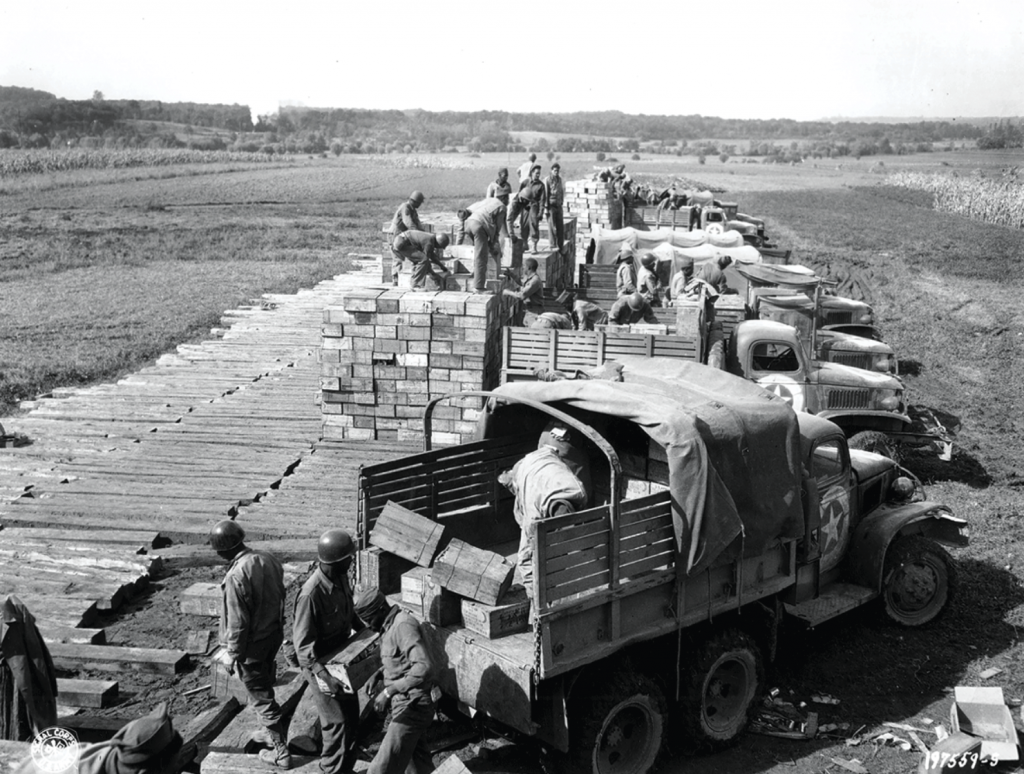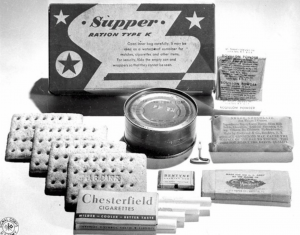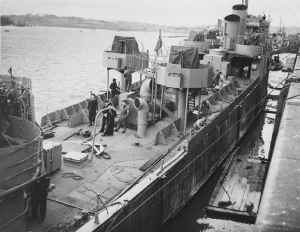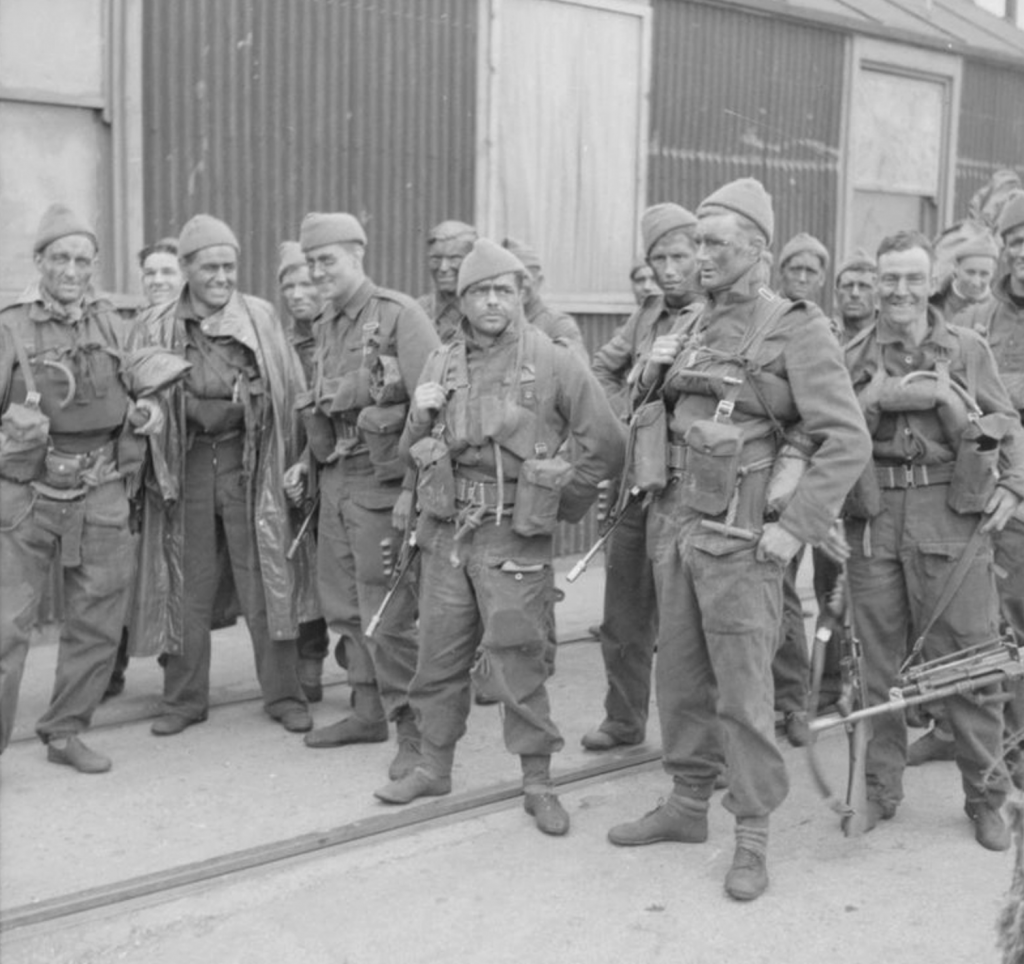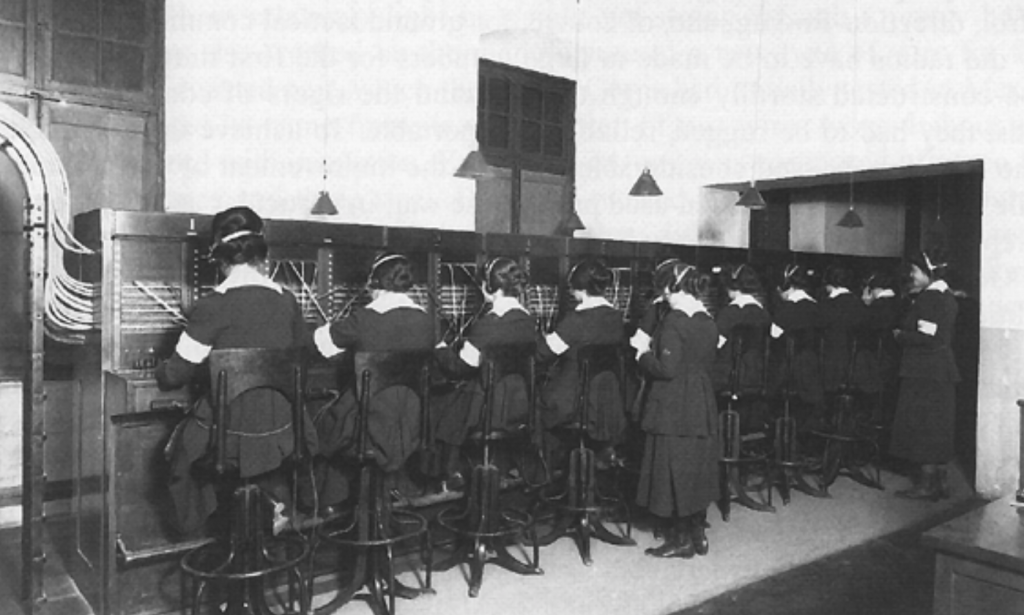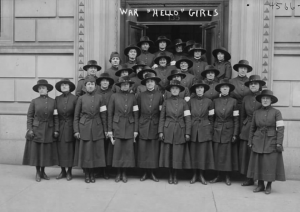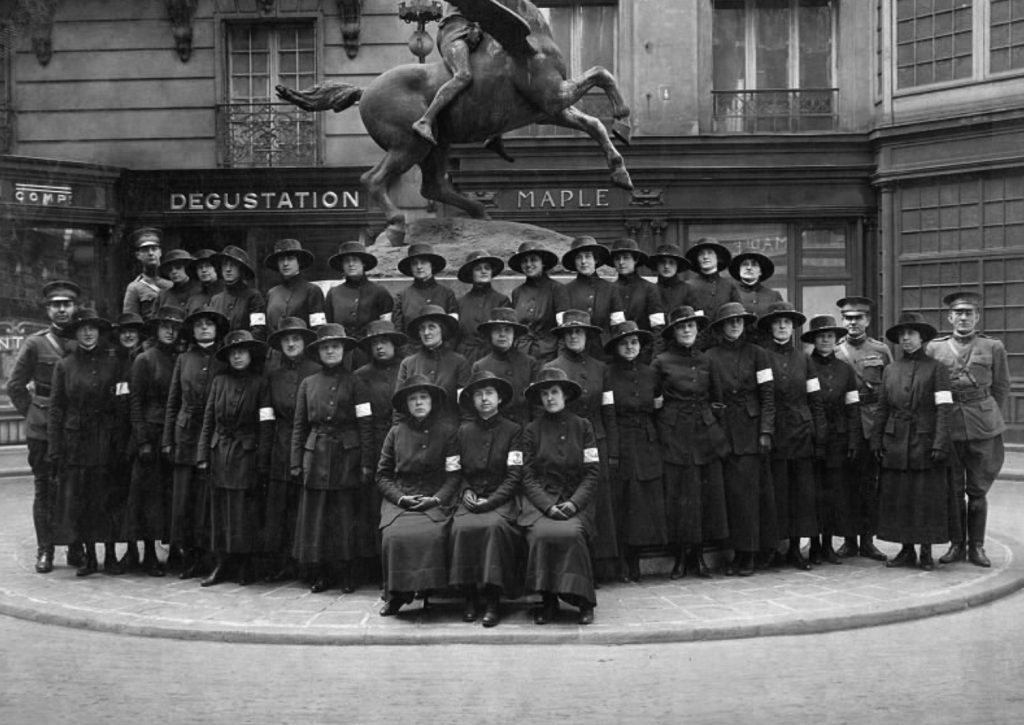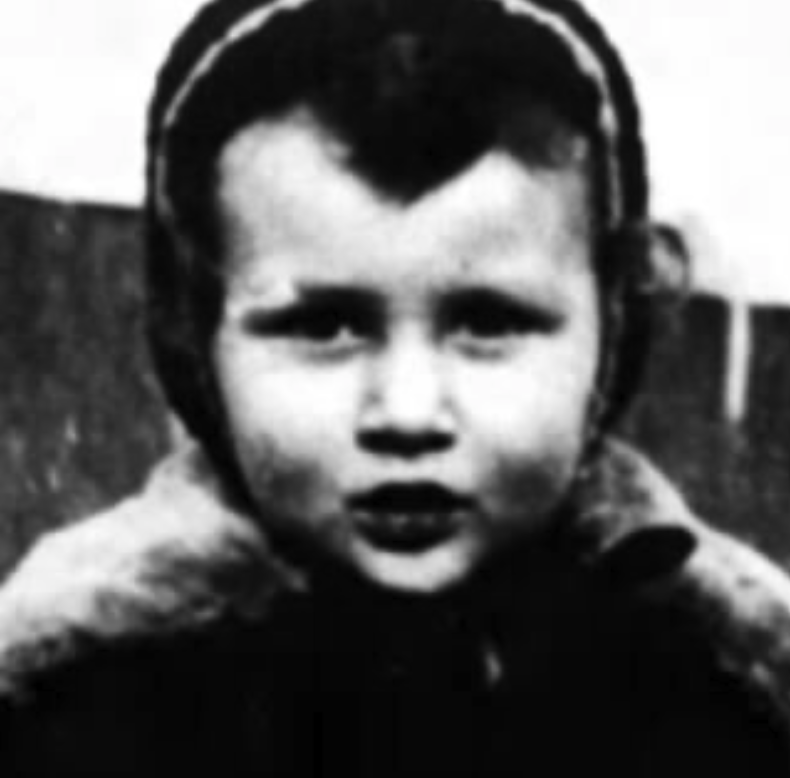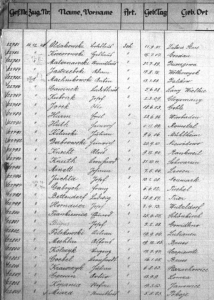The 493rd Bombardment Group was a unit of the US Army Air Forces assigned to the 93rd Bombardment Wing, Eighth Air Force, during WWII. The group included the 860th, 861st, 862nd, and 863rd Heavy Bombardment Squadrons. They were known as “the Fighting 493rd,” and we’ve recently added their Unit History to our archives. This Unit History documents the 493rd from its initial activation at McCook Army Air Base in Nebraska to its participation in D-Day and their combat experiences across Europe during the war. The 493rd returned to the United States just before V-E Day, and the unit was inactivated in August 1945.
The 493rd was the last group to become operational in the Eighth Air Force. They Initially flew B-24 heavy bombers but later transitioned to B-17s. This Unit History chronicles the 493rd and is a great way to research a military history for those who served in the group. This history is organized chronologically and contains summaries from Morning Reports, copies of the base newspaper, crew assignments, photos, and biographies.
The 493rd flew its first combat mission on June 6, 1944, or D-Day. Thirty-six B-24 bombers took off from Debach Airfield in England. When they reached their target, heavy cloud cover prevented them from dropping their ordnance. On the return trip to England, two aircraft flying in formation collided killing 19 men. Before the month was over, the 493rd conducted operations in Lisieux, Tours, Nantes, and other locations and suffered additional losses. The details for these missions can be found in individual Operation Reports.
During their time in Europe, the 493rd flew 157 bombing missions and dropped nearly 13,000 tons of bombs. Some of their targets included factories, bridges, a synthetic oil manufacturing plant, batteries, and airfields. They provided support for Operation Overlord, Operation Varsity, bombed German fortifications to support Operation Market Garden and attacked communication lines during the Battle of the Bulge. Their most difficult mission occurred on September 12, 1944, when they bombed an Ordnance Depot in Magdeburg, Germany. They lost seven aircraft and faced intense flak.
In early May 1945, the 493rd participated in six “mercy missions” in Holland, dropping 450 tons of food and supplies. In late May, they helped repatriate French and British POWs. By the end of the war, the 493rd destroyed 11 enemy aircraft but lost 41.
The group returned to the United States in the summer of 1945. The air echelon left in late June, and the ground echelon sailed home aboard RMS Queen Elizabeth in August. After a 30-day furlough, the group reassembled at Sioux Falls Army Airfield in South Dakota, where they were inactivated on August 28, 1945.
To learn more about the 493rd, see their Unit History here. Search Fold3® to see additional Unit Histories and military yearbooks.

